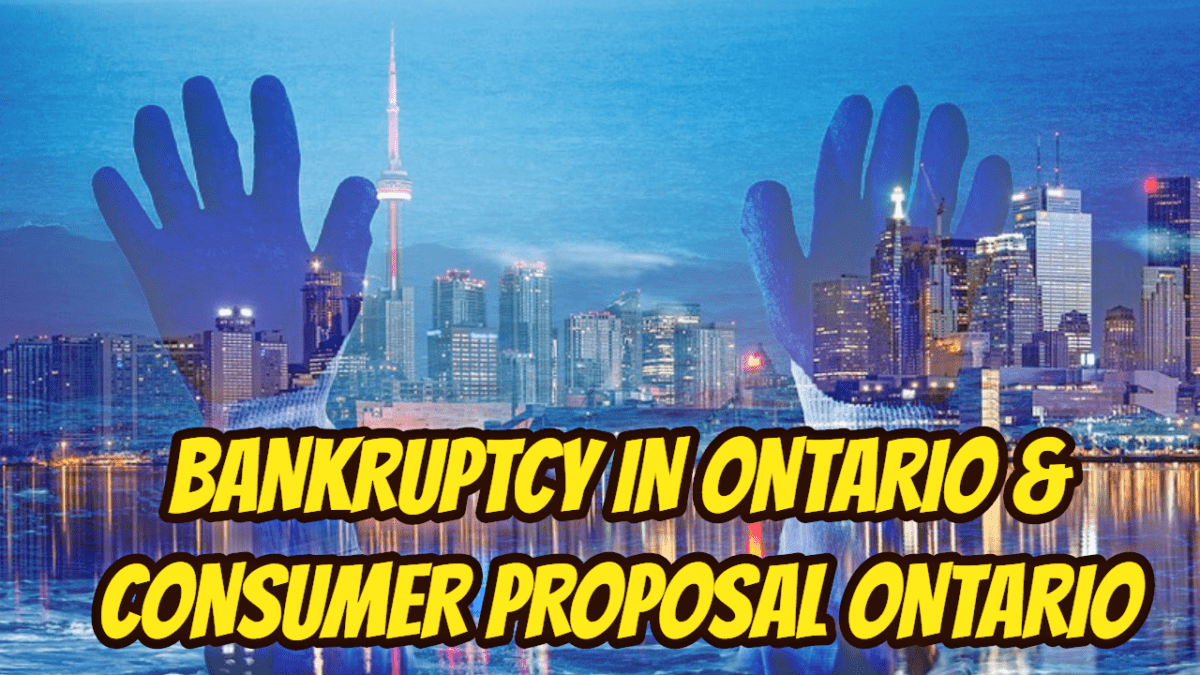Bankruptcy in Ontario Canada: Introduction
Bankruptcy is sometimes necessary for the financially troubled individual or company. In Canada in 2017, there were 125,807 insolvency filings; 60,669 bankruptcies and 65,138 proposals. Bankruptcy in Ontario Canada accounted for 15,968 of the 2017 filings. The majority of these across Canada filings were people, not companies.
Bankruptcy in Ontario Canada: Not entirely unexpected
This is an expected statistic once you understand the purpose of the Canadian insolvency system to get rid of financial obligations. It is also for the financial rehabilitation of people and companies and if possible, allow them to do so while retaining their assets.
In a down economic climate, even more, debtors use bankruptcy to protect their wide range of interests. Although on a per capita basis Canadians are savers, more recently, especially related to real estate, we are a country of borrowers. A lot of people are overloaded with debt, including credit card debt.
Bankruptcy in Ontario Canada: Bankruptcy is not always right
Any debtor with severe monetary troubles must think about bankruptcy. Bankruptcy isn’t always the right response though. In my practice, we first run through the various options available to avoid bankruptcy.
It is proper only when you have too many financial obligations that you cannot realistically repay, in whole or in part, from your future earnings or from selling your assets. This is the meaning of the financial state of insolvency.
If you make $100,000 a year and your financial obligations are only $20,000 (assuming you have no assets), why go bankrupt? Temporary financial sacrifice on your part could pay off your debts in full. This is definitely more suitable for bankruptcy.
What about a proposal?
Although each case is unique, generally speaking, if your unsecured financial debts are less than 60 percent of your net yearly pay, stay clear of bankruptcy. You could use a self-help remedy to pay off your debts in full. Alternatively, you could look to the proposal or consumer proposal mechanisms under the Bankruptcy and Insolvency Act (Canada).
Under the proposal provisions of the BIA, a person or company could take up to 5 years to pay off part of the debt. A successful proposal forgives the balance of your debt (subject to certain ones indicated below). Many creditors will wait if you show good faith and make organized repayments that provide your creditors with a better result.
A filing may protect some assets
A bankruptcy or proposal filing may also be necessary to secure your assets; this is especially true for companies looking to restructure. In a BIA filing, all civil actions against you instantly stop— whether they are legal actions, CRA garnishments or secured creditor seizure and enforcement (the last under specific conditions). Every creditor must obey the automatic stay of proceedings imposed by the BIA. A proposal filing gives you the possibility to solve your economic issues with lenders who would certainly otherwise seize and sell your assets.
Timing is everything
I advise every person and company in need of restructuring that timing is crucial. It is human nature for debtors to regularly wait far too long. By waiting too long, they shed possible advantages from an earlier restructuring filing. The longer a person or company waits, the fewer options they have. Also, if you wait too long, the less creative I can be to protect your assets.
5 general tips
- Collect your tax refunds prior to your filing. When you file for bankruptcy, any tax refund owing to you prior to the date of bankruptcy belong to your bankruptcy estate. Your licensed insolvency trustee (Trustee) collects the payments.
- The insolvency process is meant to treat all creditors fairly and all ordinary unsecured creditors equally. Seek the advice of a Trustee prior to making payments to specific unsecured creditors prior to filing. Your good intentions may prove to have created transactions that the Trustee can attack. The Trustee will then seek recovery from those parties.
- Consider how the causes of your insolvency will look to your creditors. Uncontrolled lifestyle spending looks a lot different from ongoing costs due to a mental or physical illness or an addiction. The causes of your insolvency sometimes dictate whether a proposal or bankruptcy filing is preferable.
- Have you contributed to an RRSP in the 12 months before filing for bankruptcy? That amount will have to be paid over to your Trustee under bankruptcy or accounted for in what type of proposal can be successful.
- If you have student loans, was the last time you were either a full or part-time student more than 7 years prior to your filing? If no, you won’t be able to end the student loan debt. However, it may be enough to relieve yourself of your other unsecured debts to have enough funds every month to start repaying the student loans.
Some debts can’t be discharged
Bankruptcy will not end every debt. There are certain debts that cannot be discharged through bankruptcy. Examples are:
- student loans as described above
- child support and alimony under either a court order or written separation agreement
- fines or restitution ordered by a Court
- debts arising out of fraud, embezzlement or misappropriation while acting in a fiduciary capacity
- amounts owing to secured creditors registered against your assets, such as a mortgage or car loan. Any amount still owing after the asset is sold, if any, is an unsecured claim which is discharged in a bankruptcy
Bankruptcy must be your last option
Bankruptcy could be your ideal choice if the amount of your debt and the amount you can realistically repay will not settle it. If you have few possessions to lose in bankruptcy, then a bankruptcy filing may be your best choice. By meeting with a Trustee early to discuss your options, you will get a good understanding of what may be possible.
I always advise every person or company never file for bankruptcy without first striving to solve a case without bankruptcy. Bankruptcy must be your last option, not your very first – avoid bankruptcy if you can.
Think about all readily available options prior to determining that bankruptcy is genuinely the best decision for you and your situation. If you find you are in too deep and can’t dig out fast enough, then you do need professional help.
Seek the advice of a professional trustee
Many people and companies facing serious financial issues don’t know where to go for professional help or are too embarrassed. There’s no shame in seeking professional, financial help. Licensed insolvency trustees evaluate your situation and help you to arrive at the best possible solution for your problems.
Ira Smith Trustee & Receiver Inc. is here to help. We’re federally regulated and subject to a strict code of ethics. We offer a depth of expertise and provide a high quality and cost-effective service. I understand your pain and we can end it. You will find that we use a friendly, non-judgmental method.
Give us a call today and let us help you solve your financial problems Starting Over, Starting Now.

